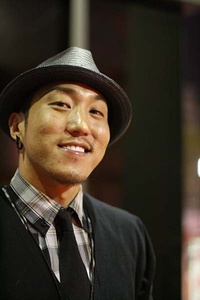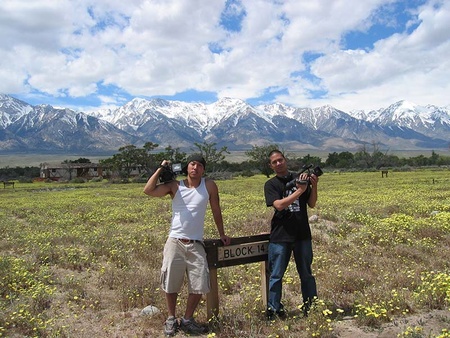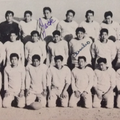Documentary filmmaker Tad Nakamura illustrates parallels between Japanese American history and current American issues
Tad Nakamura's Pilgrimage begins with a shot of candles in the darkness. The camera scans over the lowered heads of people gathered together in vigil outside the Japanese American National Museum, as music plays solemn and slow. As if pushed along by the music, the scene changes to black-and-white, grainy footage of a little girl running. All around her are barracks. Nearby, a plainly-dressed family gathers for a photo as an old woman looks on.
Manzanar in the 1940s, I realize.
The image of the woman fades away, replaced by a length of barbed wire and a few lines explaining the evacuation and the 27 years of silence that followed. The buzz of a helicopter drones over the words. They disappear, and drums take the place of the helicopter, tapping a slow hip-hop beat, still solemn but languorous and captivating and, like that, I’m hooked.
Like most visitors to Discover Nikkei and the Japanese American National Museum, I’ve been exposed to countless incarnations of the story of this chapter in Japanese American history. And though it takes a back seat to the incarceration, I’ve heard much, too, about the Asian American Movement in the 1960s and 70s, the time period during which a group of Japanese Americans—mostly Sansei—decided to make the symbolic trip to Manzanar in an attempt to feel connected with their roots, the episode on which Pilgrimage focuses.
Still, Nakamura’s documentary is different. Pilgrimage offers a fresh take on these familiar events in history, fusing footage old and recent with a hip soundtrack in an effective, engaging mélange that moves like poetry. As I watched, I caught myself nodding along to the beat, which swells and relaxes, complementing, not distracting from, the words of the interviewees.
Once I’m so engrossed I’ve almost forgotten where I am, the screen flashes back to the still-unexplained candlelight vigil from the beginning of the film. The voiceover of news anchor tells us this time that it’s September 28, 2001, less than a few weeks after 9-11. The crowd is there not only to mourn those lost but also to “express support for the Muslim and Arab communities” whose experience after the 2001 attack so closely paralleled that of Japanese Americans after the bombing of Pearl Harbor.
Suddenly, a film that seemed to be all about the experience of one ethnic community at a specific point in time takes a more universal tenor.
“What I wanted to do with Pilgrimage,” says Nakamura when I meet with him for this article, “is speak to the Japanese American community and really say, [the incarceration] happened and it was one thing that we as a community got through that experience, but it was also another thing to reclaim that experience, and to connect it to other people’s struggles.”
Tad Nakamura sits across the table from me in a room at the National Museum, his cheek resting on his hand. With his black earrings, white t-shirt, and gelled-back hair, he fits the description of the “cool L.A. filmmaker.” I expect to feel intimidated.
But when he speaks, it’s with down-to-earth sincerity, and throughout the interview he uses the first person plural, drawing me into his world as he speaks about “our community” and “our generation.”
As evidenced by Pilgrimage, it’s the parallels between people and groups that interest Nakamura and breathe life into his work. “One thing I really want to do through my films is build those bridges between the Japanese American community and other marginalized communities,” he says. “I think a lot of times we focus too much on how we were wronged and, you know, that’s great, but at the same time it does no good if you don’t recognize the same experiences or the same injustices happening to other people—or even worse, contribute to [those injustices].”
As examples of such parallels, he cites the INS (Immigration and Naturalization Service) and ICE (Immigrations and Customs Enforcement) raids in Arizona and Southern California, even the painfully slow legalization of gay marriage.
“You don’t even have to go that far back and we were in the exact same situation,” he says, “like with anti-miscegenation or immigration laws. The connection is so blatant and direct.” To the ambivalence of members of the Japanese American community towards the issues, he reacts in disbelief. “It’s really like I got mine and then I’m okay, right? It’s like, well, there are still other people that are fighting for what you’ve got.”
© 2011 Mia Nakaji Monnier







